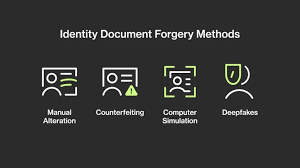Educational technology trends
Introduction: The Evolution of Educational Technology
The education sector has undergone a remarkable transformation over the past decade. From traditional chalkboards to immersive virtual classrooms, educational technology (EdTech) is reshaping the landscape of learning and teaching. The pace at which new technologies are being adopted in the education space is accelerating, driven by a combination of necessity (e.g., the COVID-19 pandemic), increased digital literacy, and advances in AI, cloud computing, and mobile technology.
Educational technology is no longer limited to a few specialized software tools; it is a broad, multi-faceted industry with solutions that address a wide range of educational needs. From personalized learning experiences to gamified educational platforms, these technologies offer tools that cater to students, teachers, and administrators alike. In this article, we explore the key trends shaping EdTech in 2024, the characteristics of cutting-edge tools and platforms, market dynamics, and the target audiences for these solutions.
1. The Rise of AI and Machine Learning in Education
One of the most influential trends in educational technology is the integration of artificial intelligence (AI) and machine learning (ML). AI’s capabilities to process large amounts of data and recognize patterns have led to several applications that enhance learning experiences.
AI-Powered Personalized Learning
AI allows for the development of adaptive learning systems that tailor educational content to the specific needs of individual students. These systems assess a learner’s progress in real-time and adapt the difficulty or type of content based on their strengths and weaknesses. For example, a student struggling with algebra can receive more practice problems or different instructional materials targeted at areas where they need improvement.
Automated Grading and Administrative Support
Another major benefit of AI in education is its ability to streamline administrative tasks, such as grading assignments or tracking attendance. AI-driven platforms can automate the grading of multiple-choice quizzes and essays, providing teachers with more time to focus on lesson planning and student engagement. Administrative tools powered by AI also help schools and universities manage student data more efficiently.
Virtual Teaching Assistants
AI is also being used to develop virtual teaching assistants, which can answer students’ questions, provide explanations, and even tutor students in specific subjects. These virtual assistants can help support teachers in large classrooms, ensuring that students receive individualized attention even in busy environments.
Ethical Concerns and Challenges
While AI has incredible potential, it also raises ethical concerns. Privacy and data security are critical issues in education, especially when using AI to collect and analyze personal data on students. Schools and technology providers must ensure that they have robust data protection measures in place to prevent breaches and misuse.
2. Gamification: Making Learning Fun and Engaging
Gamification in education is another trend that has gained momentum in recent years. By incorporating game mechanics—such as points, badges, leaderboards, and rewards—into learning environments, educators can increase student engagement and motivation.
The Psychology Behind Gamification
Gamification taps into the psychological drivers of engagement and competition. By rewarding students for completing tasks or reaching milestones, gamified learning platforms help to keep learners motivated. This method is particularly effective for younger students or those who might otherwise struggle to stay engaged in traditional learning environments.
Examples of Gamified Educational Tools
Platforms like Kahoot! and Duolingo are prime examples of gamification in education. Kahoot! turns quizzes into competitive games, making learning fun and interactive, while Duolingo uses a point system, levels, and streaks to encourage language learning.
Gamification in Higher Education and Professional Training
Gamification isn’t just for K-12 students. Universities and corporate training programs are also adopting these techniques to create engaging learning experiences. For example, simulation-based learning platforms allow medical students to practice surgeries in a virtual environment, while sales teams can hone their skills through interactive role-playing games.
Challenges of Gamification
While gamification can make learning more enjoyable, there are potential drawbacks, such as an over-reliance on external rewards. In some cases, students may focus more on earning points or badges rather than fully understanding the material. Balancing fun with substantive learning is crucial.
3. The Integration of Virtual and Augmented Reality in Education
Virtual reality (VR) and augmented reality (AR) are transforming how students interact with educational content. These technologies create immersive learning environments that enable students to engage with subjects in ways that were previously impossible.
VR for Virtual Field Trips
One of the most exciting applications of VR in education is the virtual field trip. With VR headsets, students can travel to historical sites, explore distant planets, or dive into the depths of the ocean—all without leaving their classrooms. This immersive experience helps to bring lessons to life, making abstract or distant concepts more tangible.
AR for Interactive Learning
Augmented reality overlays digital content onto the real world, allowing students to interact with 3D models, diagrams, and animations. For example, medical students can use AR apps to visualize and manipulate 3D representations of human anatomy, gaining a deeper understanding of complex biological systems.
Practical Challenges and Accessibility Issues
Although VR and AR offer significant educational benefits, they also present challenges. The cost of VR headsets and AR devices can be prohibitive for some schools, particularly in underserved communities. Additionally, there is a learning curve for both teachers and students when it comes to using these technologies effectively.
4. Blended Learning: Combining Online and In-Person Education
Blended learning, which combines traditional face-to-face instruction with digital tools, has become increasingly popular as schools and universities adapt to the needs of a digital-first generation.
The Benefits of Blended Learning
Blended learning allows students to benefit from the flexibility and personalized pacing of online education while still receiving the structure and support of in-person instruction. This hybrid approach offers the best of both worlds, accommodating different learning styles and preferences.
Models of Blended Learning
There are several models of blended learning, including:
- Flipped Classrooms: Students watch pre-recorded lectures or review materials online before class, freeing up classroom time for hands-on activities and discussions.
- Station Rotation: Students rotate between different learning stations, some of which are online and others led by the teacher.
- Enriched Virtual: Students complete most of their coursework online but attend occasional in-person sessions for hands-on projects or assessments.
Challenges of Implementing Blended Learning
One of the biggest challenges of blended learning is ensuring that all students have access to the necessary technology. Schools must provide devices and reliable internet connections to all students to avoid creating a digital divide. Additionally, teachers need professional development to effectively integrate technology into their teaching strategies.
5. Adaptive Learning: Customizing Education to Individual Needs
Adaptive learning platforms use data and algorithms to personalize educational content for each learner. These systems track a student’s progress and adjust the difficulty or focus of lessons based on their performance.
How Adaptive Learning Works
Adaptive learning tools continuously collect data on a student’s responses and performance. If a student struggles with a particular concept, the platform will offer additional practice problems or alternative explanations. If a student excels, the system will move them on to more advanced material.
Popular Adaptive Learning Platforms
Some popular adaptive learning platforms include Smart Sparrow, DreamBox, and McGraw-Hill's ALEKS. These tools are widely used in K-12 education as well as higher education and corporate training.
Benefits of Adaptive Learning
The primary benefit of adaptive learning is that it allows for truly personalized education. Students who struggle with certain topics can receive extra help without slowing down the rest of the class. Meanwhile, advanced students can progress more quickly, ensuring that they remain challenged and engaged.
6. Learning Management Systems (LMS): Centralizing Digital Learning
Learning Management Systems (LMS) have become an essential tool for educational institutions and businesses. These platforms provide a central hub where educators can create, manage, and deliver content, track student progress, and facilitate communication.
Key Features of an LMS
An LMS typically includes features such as:
- Course creation and management tools
- Assessment and grading systems
- Discussion forums and chat features
- Analytics to track student progress
- Integration with other educational tools and apps
Popular Learning Management Systems
Some of the most widely used LMS platforms include Moodle, Blackboard, Canvas, and Google Classroom. These platforms are used by schools, universities, and businesses to deliver training and educational content.
The Future of LMS
As educational technology continues to evolve, LMS platforms are incorporating more advanced features, such as AI-driven analytics, integration with AR/VR content, and more robust mobile learning experiences.
7. Cloud Computing and Education: Breaking Down Barriers
Cloud computing has revolutionized how educational content is stored, accessed, and shared. With cloud-based platforms, students and teachers can access learning materials from any location and on any device.
The Role of Cloud-Based Tools in Education
Cloud-based tools allow schools to reduce the need for physical infrastructure, such as computer labs, while providing students with access to a wider range of resources. Teachers can collaborate on lesson plans, share materials with students, and provide real-time feedback without the constraints of geography.
Popular Cloud-Based Educational Tools
Some popular cloud-based tools include:
- Google Drive: A suite of productivity tools that allows for real-time collaboration on documents, presentations, and spreadsheets.
- Microsoft OneDrive: Similar to Google Drive, this platform offers cloud storage and collaboration tools for educators and students.
- Dropbox Education: A cloud-based file storage service designed specifically for schools and universities.
Security and Privacy Considerations
While cloud computing offers many benefits, it also raises concerns about data security and privacy. Educational institutions must ensure that they comply with data protection regulations, such as the Family Educational Rights and Privacy Act (FERPA) in the U.S., to protect student information.
Market Analysis: The Growth of the Educational Technology Industry
The global EdTech market has seen exponential growth over the past few years, and this trend is expected to continue. According to research, the global educational technology market was valued at approximately $106 billion in 2021, and it is projected to reach over $400 billion by 2027.
Key Drivers of Growth
Several factors are driving the growth of the EdTech market, including:
- Increased adoption of online learning due to the COVID-19 pandemic
- Rising demand for personalized learning experiences
- Advancements in AI, VR, and other emerging technologies
- A growing focus on upskilling and reskilling in the workforce
Challenges Facing the EdTech Market
Despite its rapid growth, the EdTech industry faces challenges, such as the digital divide in access to technology, the need for teacher training on new platforms, and concerns over data privacy and security.
Target Audience: Who Benefits from EdTech?
EdTech solutions are designed to cater to a wide range of audiences, from K-12 students and teachers to university professors, adult learners, and corporate trainers. Each of these groups has specific needs that educational technology can address.
K-12 Students and Teachers
For younger students, EdTech offers tools that make learning more engaging and personalized. Teachers can use digital platforms to track student progress, create interactive lessons, and provide additional resources for students who need extra help.
Higher Education
In universities, EdTech is revolutionizing how courses are taught. Professors can create blended learning experiences, offer online office hours, and use data analytics to identify students who may be struggling. Students benefit from the flexibility of online learning, especially those in remote areas or with busy schedules.
Corporate Training and Professional Development
Businesses are also embracing EdTech for training and professional development. Corporate training platforms offer employees access to courses on everything from leadership skills to software development. These platforms often include interactive elements, such as simulations and gamified learning experiences.
Conclusion: The Future of Educational Technology
As educational technology continues to evolve, it holds the promise of creating more inclusive, engaging, and personalized learning experiences. The trends discussed in this article—AI, gamification, VR/AR, blended learning, adaptive learning, and cloud computing—are just the beginning of what is possible.
The future of education will be shaped by the continued integration of these technologies, as well as the ability of educators and students to adapt to new tools and methodologies. While there are challenges to overcome, such as ensuring equal access to technology and protecting student data, the potential benefits of EdTech are immense.
In conclusion, educational technology is not just a trend—it is the future of learning. Whether in schools, universities, or the workplace, the tools and platforms being developed today are laying the foundation for a more dynamic, responsive, and effective education system.
 Custom ID services
Custom ID services
 Educational technology trends
Educational technology trends
 virtual identification
virtual identification
 Fake ID online
Fake ID online
 Fake identification cards
Fake identification cards
 Campus identification systems
Campus identification systems
 High-quality identification ca
High-quality identification ca

